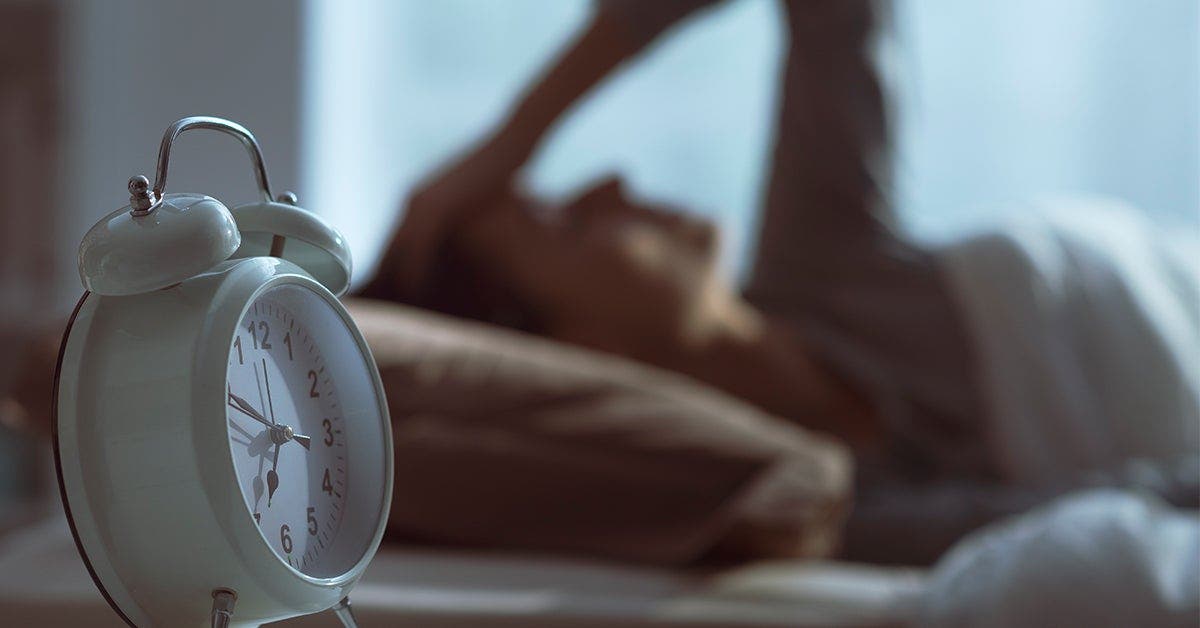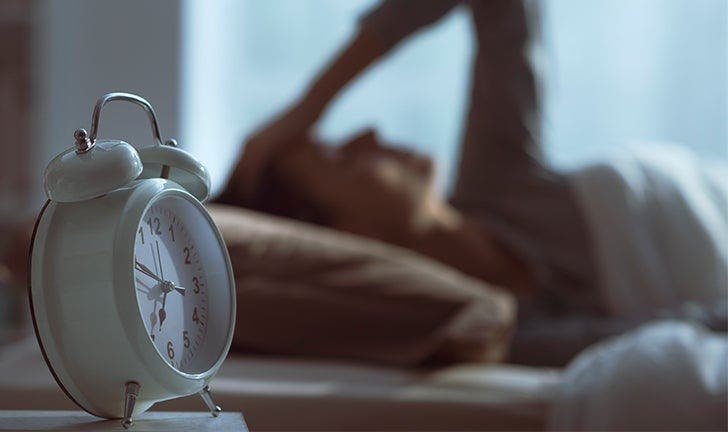A Look at Common Sleep Disorders


We all know sleep is important for our overall health, but what if it’s being disrupted? There are a number of sleep disorders out there – here’s a rundown of some of the most common ones.
“The most common sleep disorders in North American adults are insomnia, obstructive sleep apnea, narcolepsy, restless legs syndrome, and REM sleep behaviour disorder,” says Dr. Chelsie Rohrscheib, the head sleep specialist and neuroscientist at Wesper, a home sleep testing company.
All of these, Rohrscheib says, contribute to significant sleep loss, which science has shown directly contributes to weight gain and poor eating habits.
Here’s a breakdown of each of those disorders:
Insomnia
“Insomnia is by far the most common sleep disorder and occurs when you have difficulty falling asleep or staying asleep, or a combination of both,” says Rohrscheib, adding that it can be short term (three months of less) or chronic (more than three months. Causes include: stress, poor sleep habits, genetics, and secondary diseases and conditions. “Most people have suffered from a bout of insomnia at some point in their life.”
Obstructive sleep apnea
“Obstructive Sleep Apnea (OSA) is a sleep breathing disorder and occurs when the tissues in the back of the throat relax during sleep and obstruct the flow of air into the lungs,” she explains. “Apnea events can occur multiple times an hour and trigger the brain to wake up to recommence breathing. The constant cycle of falling asleep and waking up makes the sufferer feel chronically sleepy during the day.”
Narcolepsy
“Narcolepsy is a hypersomnia sleep disorder that causes increased sleep time and excessive daytime sleepiness,” explains Rohrscheib. “Narcolepsy occurs when an individual’s own immune system mistakenly attacks and damages the part of the brain that’s responsible for regulating the sleep/wake cycle. Because sleep is no longer regulated in narcoleptics, they spend too much time in the REM (dreaming) stage of sleep, and not enough time in the deep, refreshing stage of sleep, leaving the sufferer feeling chronically tired no matter how much time they sleep.”
Restless legs syndrome
This is a neurological disorder that makes it difficult to fall asleep and stay asleep, she says. “People with RLS experience an uncomfortable, creepy-crawly or painful sensation in their limbs, which is only relieved by movement. RLS occurs when the sufferer is trying to relax or go to sleep, making it very difficult to drift off. Scientists don’t completely understand why RLS occurs, but scientific research suggests it’s due to the abnormal use of the neurochemicals that control movement.”
REM sleep behaviour disorder
“REM sleep behaviour disorder is classified as any abnormal or unusual behaviour that occurs during the REM stage of sleep,” says Rohrscheib. She explains that normally, when we’re in REM sleep, the brain partially paralyzes the body so that we can’t act out our dreams and hurt ourselves. “People with REM sleep behaviour disorder have brains that don’t properly stop movement, causing them to sleep walk, sleep talk, thrash, or a large host of abnormal behaviours.”
Effects on the body
Sleep deprivation has a direct effect on weight gain in a few ways.
“Several scientific studies found that sleep loss changes the balance of leptin and ghrelin, the two hormones that control hunger and eating,” Rohrscheib says. “Sleep-deprived individuals have significantly higher ghrelin levels, the hormone that makes you feel hungry, and significantly lower leptin levels, the hormone that makes you feel full. This means that people who regularly lose sleep are more likely to feel hungry and consume more calories.”
She adds that other research shows sleep-deprived adults consume more daily calories on average, compared with adults who get adequate sleep. And sleep loss is also associated with an increase in the desire for high-calorie foods.
“Sleep loss can also reduce your body’s ability to lose weight efficiently,” she says. “Studies have shown that even when placed on low-calorie diets, individuals that are sleep deprived lost 55 per cent less weight from fat than individuals that were on the same diet but had sufficient sleep.”
Chronic sleep loss also affects other areas of health, Rohrscheib says, increasing the risk of developing a chronic health condition such as heart disease, cancer or diabetes, as well as having negative effects on mental health.
How to tell if it’s a disorder that’s disrupting your sleep
“Most people are able to tell when their sleep is disrupted because they feel sleepy during the day,” says Rohrscheib. “It can be tricky to determine what is causing sleep loss and whether you should be evaluated by a specialist to determine whether you have a sleep disorder.”
Here are some things to look out for, but ultimately if you are concerned about your sleep quality, it’s best to talk to your doctor.
“Individuals with insomnia have consistent difficulty falling asleep within 30 minutes or wake up multiple times during the night and are unable to fall back to sleep quickly,” says Rohrscheib.
“People with OSA commonly have excessive daytime sleepiness no matter how long they sleep. Their partner may notice they stop breathing momentarily during the night. Up to 95 per cent of OSA sufferers snore and many complain of morning headaches and chronically sore throat.”
Narcolepsy, on the other hand, is much more difficult to diagnose, Rohrscheib says. “People with type I narcolepsy usually experience cataplexy, or extreme muscle weakness, which causes the sufferer to collapse and fall in sleep in place. Type II narcolepsy doesn’t involve cataplexy, and the main sign is extreme daytime sleepiness and long sleep times.”
Restless legs syndrome is an easy one to recognize, she adds, because it causes an extremely uncomfortable sensation in the legs and sometimes arms when you’re trying to fall asleep. “Most people report that RLS is only alleviated by constant movement of the limbs.”
REM sleep behaviour disorder, she says, is almost always first noticed by the partner of the individual with the disorder. Signs can be small, such as excessive sleep talking, or more dramatic, such as sleep walking or sleep thrashing.
“If you are experiencing chronic sleep loss or experiencing excessive daytime sleepiness for no [apparent] reason,” Rohrscheib says, “then you should speak to your doctor about seeing a sleep specialist for evaluation.”
